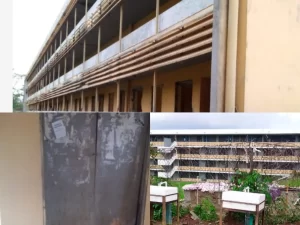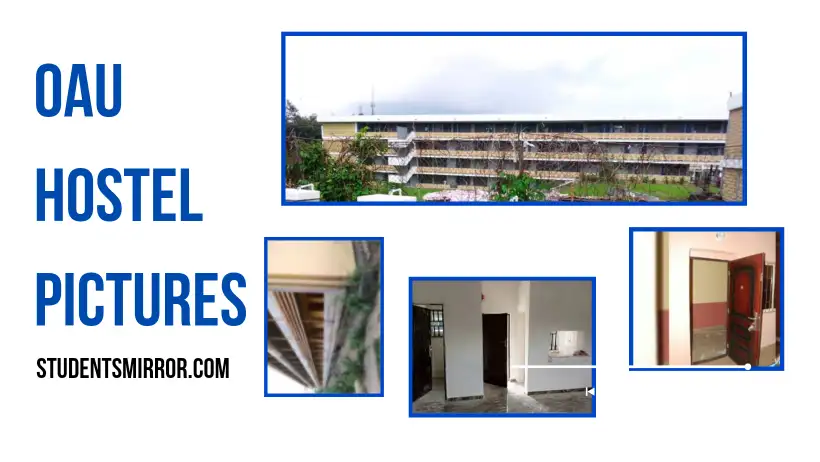This article is for you if you’ve been curious about what the Obafemi Awolowo University (OAU) hostels look like. We’ll be showcasing pictures of the hostels and providing other vital information you might need to know about the institution along the way.
About OAU
Established as one of three universities in Nigeria between 1961 and 1962, Obafemi Awolowo University (OAU) in Ile-Ife originated from a commission’s report in 1960. The Federal Government appointed the Ashby Commission in April 1959, chaired by Sir Eric Ashby, to assess the country’s post-secondary and higher education needs over the next two decades. The Provisional Council of the University was inaugurated on June 8, 1961, under Chief Rotimi Williams’ chairmanship.
Subsequently, on June 11, 1970, the University of Ife edict was promulgated, replacing the Provisional Council Law of 1961. This edict underwent amendments through the Obafemi Awolowo University, Ile-Ife (Amended) Edict No. 112 of 1975 (Transitional Provisions) Decree No. 23 of 1975. This decree marked the takeover of OAU by the Federal Military Government, establishing a Provisional Council as an interim governing body. This council, subject to the Federal Government’s general direction, controlled policies and finances and managed the university’s affairs. The Provisional Council has since been succeeded by a Governing Council.
In 1992, Obafemi Awolowo University implemented a collegiate system consisting of five colleges. Despite its initial inefficiency, the system was discontinued after two years. Nevertheless, the Postgraduate College and the College of Health Sciences were preserved. Currently, the College of Health Sciences encompasses the Faculties of Basic Medical Sciences, Clinical Sciences, and Dentistry.
Pictures of OAU Hostel
The Ile-Ife campus spans about 5,000 acres (20 km2), situated on a larger site of 13,000 acres (53 km2) of university-owned land. Notable halls of residence on the campus include Awolowo Hall, Angola Hall, Alumni Hall, Education Trust Fund (ETF) Hall, Adekunle Fajuyi Hall (FAJ), Ladoke Akintola Hall, Moremi Hall, Mozambique Hall (Moz), and Murtala Muhammed Post Graduate Hall.

Among the male halls are Awolowo Hall, Angola Hall, ETF Hall, and Fajuyi Hall. The female halls include Alumni Hall, Ladoke Akintola Hall, Moremi Hall, and Mozambique Hall. Additionally, the postgraduate hall, Murtala Muhammed Hall, is a mixed hall accommodating both male and female students.
Akintola Hall for female students at OAU is the second most sought-after female residence, known as “Sports” due to its location. It houses a quieter version of Moremi queens, often perceived as classy and silent. The hall’s unique features include close proximity to academic areas, a maximum of four students per room, and a standard cybercafé. Despite occasional issues with water and electricity, Akintola is esteemed for its privacy, which attracts students who prioritize campus security.
In 2018, Obafemi Awolowo University (OAU) in Ile-Ife announced plans to renovate its dilapidated student hostels. The university, established in 1962 as the University of Ife, has nine halls of residence, most of which are in disrepair due to years of neglect and accommodating more students than their original capacity.
For example, shared six-bed rooms in Awolowo Hall typically house ten students each, putting immense strain on the facilities. In recent years, OAU faced criticism after aggrieved students shared pictures of the university’s filthy and dilapidated living conditions, including bathrooms and rooms, on social media.

To address these concerns, the university requested that students vacate their residences at the start of the vacation period so that renovation could commence.
The oldest hostels are Awolowo Hall (male) and Moremi Hall (female), built over 50 years ago. These were followed by Angola Hall (male) and Mozambique Hall (female) in 1975. These four halls house approximately 8,000 students residing on campus.
Subsequently, Adekunle Fajuyi (male), Ladoke Akintola (female), Alumni (female), ETF (male), and Murtala Muhammed (postgraduate) Halls were constructed.
Angola and Mozambique Halls, traditionally for first-year students, are often overcrowded. Officially, each room should have 12 occupants. However, it’s common for “legal occupants” to “help” “illegal occupants,” typically second-year students who haven’t been allocated a room or cannot afford off-campus housing.

